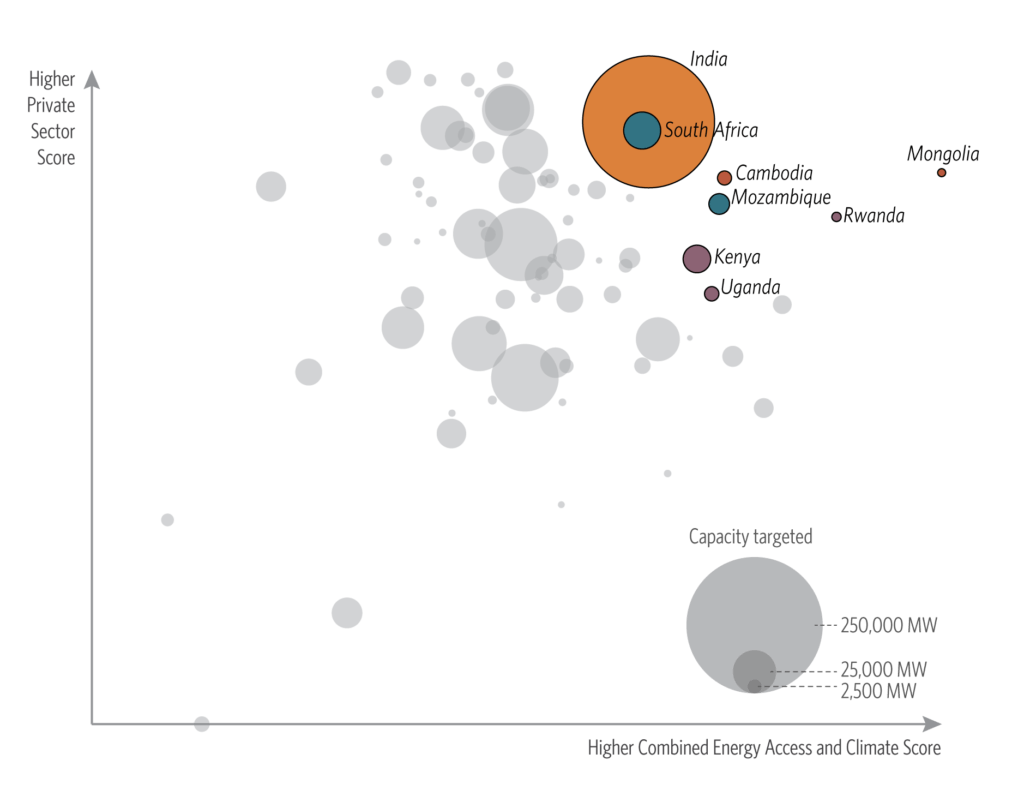CPI looked at 75 blended finance initiatives in clean energy, diving in depth into a subset of them, to understand how barriers are currently being addressed and remaining gaps. They found, among others, that:
- The experience to date of blended finance in clean energy offers ample successes and room for improvement going forward;
- As clean energy closes the “viability gap” with fossil fuels, there is a gap between the investment risks and barriers addressed by earlier blended finance initiatives and those cited by investors as most important to address going forward, with liquidity, off-taker, and currency risks less frequently addressed to date;
- There is a gap between the types of instruments most needed and those offered: risk mitigation instruments, such as guarantees and insurance, are less frequently offered than direct investment; there are also major gaps in local currency financing, early stage risk financing, and vehicles that aggregate projects, especially small ones; and
- The limited scale of blended finance initiatives – both through direct investment vehicles as well as indirect blended finance via risk mitigation – likely limits the participation of many investors.
Blended finance is essential to increase private investment in critical markets, but changes to how it is deployed would increase its success in supporting global goals and mobilizing private investment. In particular, they recommend to blended finance practitioners that:
- Blended finance efforts focus on the highest impact opportunities. Our analysis identifies markets in Southeast Asia, Sub-Saharan Africa, and South Asia that have high relevance for climate change mitigation and energy access and broadly conducive environments for private sector investment, yet ongoing needs for blended finance;
- Developers of blended finance initiatives target the most commonly cited risks to private investors; and
- Achieving scale will require, among others: supporting initiatives that are ripe for expansion, as risks can remain even after a successful pilot; building sustainability through technical advisory services and supporting networks that generate new ideas and partnerships; and improving efficiency by streamlining approval processes.
Many innovators are already taking these lessons and building the next generation of blended finance initiatives. Promising approaches are highlighted throughout the report.
CPI found that the greatest opportunities for blended finance in clean energy are in Sub-Saharan Africa and South and East Asia, with a subset of eight countries alone offering more than USD 360bn in investment potential in clean energy by 2030 (see following bubble chart).

Private investors, in particular, should note the investment potential in the following:
- Large, relatively mature geographies, such as India and South Africa, which offer strong renewable energy policy environments and a wide variety of investment opportunities;
- Smaller countries in which grid-connected projects in hydro, wind, solar, and geothermal can be diversified via global and regional investment vehicles; and
- The nascent, yet quickly growing, distributed generation market, particularly in countries with large populations still without access to energy, through corporate finance and securitized assets.
Even though clean energy costs have come down significantly in recent years, risks and barriers remain in these countries and are preventing investment. The top risks identified in this research are off-taker risk, currency risk, policy risk, and liquidity and scale risks. In addition, many early stage projects and clean energy companies face barriers in accessing financing.